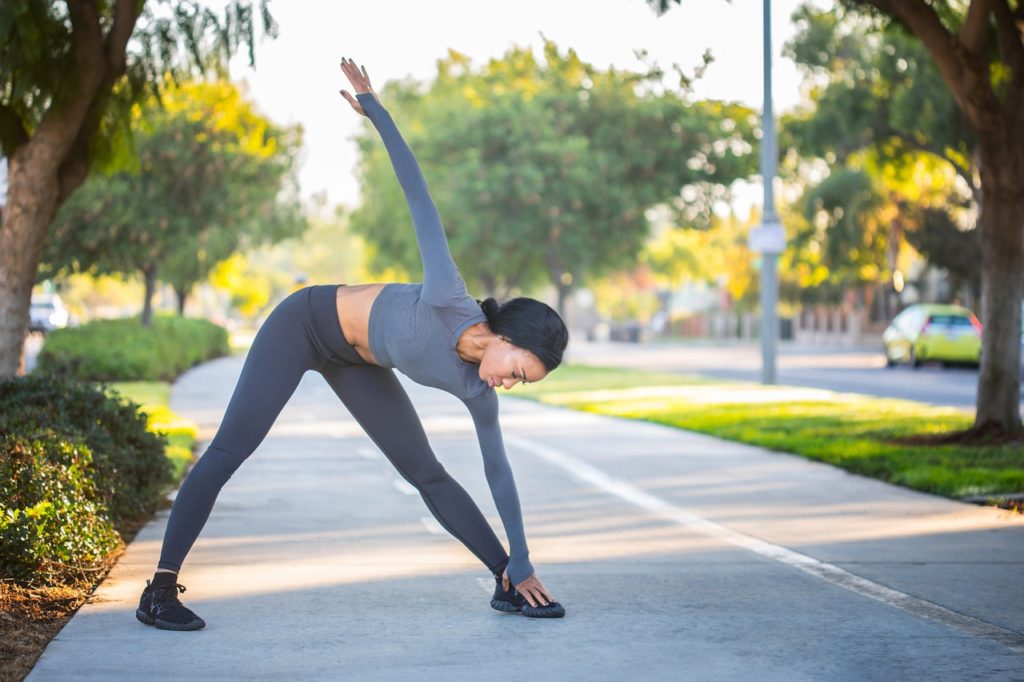Shuffling is a fun and engaging activity that people of all ages and fitness levels can enjoy. Many people enjoy shuffling as a way to stay active and healthy, while others enjoy it as a form of self-expression or creative outlet. Whether you shuffle alone or with friends, it’s a great way to have fun and stay connected to your love of music and dance.
Shuffling has become a popular dance trend that has been around for many years. It is a unique style of dance that involves moving your feet to the rhythm of the music while crossing your legs over one another. Shuffling originated in the 1980s in Melbourne, Australia, and has since spread worldwide, with many people enjoying this fun and energetic dance style. In this article, we will explore the history of shuffling, how to do it properly, and its benefits.
History of Shuffling
Shuffling originated in the late 1980s in the underground rave scene in Melbourne, Australia. The style of dance was created by young people who were experimenting with different dance styles, and it quickly caught on as a popular dance trend. The dance style is heavily influenced by hip-hop, breakdancing, and techno music, which were popular genres at the time. The shuffle dance style has since evolved and has been incorporated into many different types of music, including EDM, trap, and dubstep.
What is Shuffling?
Shuffling is a dance style that originated in the rave and electronic dance music scene. It involves fast footwork, often done in a repetitive and rhythmic pattern, that is synchronized with the beat of the music. Shuffling is typically done with a relaxed upper body and a focus on foot movements.
There are many different styles of shuffling, each with its own unique variations and techniques. Some of the most popular styles include the Melbourne Shuffle, Cutting Shapes, and the Stomp. Shuffling can be done solo or in groups, and often involves improvisation and freestyle elements.
In recent years, shuffling has gained popularity outside of the electronic dance music scene, with dancers incorporating elements of shuffling into other dance styles and even fitness routines. The high-energy and fast-paced nature of shuffling makes it a fun and engaging activity for people of all ages and skill levels.
How to Shuffle
So, you want to learn how to shuffle? Shuffling is a fun and energetic dance style that can be enjoyed by people of all ages. On top of that, learning to shuffle can be a fun and rewarding experience. This hobby is all about finding your rhythm and letting the music move you. Here are some tips to help you get started:
@jl.shuffle1 Replying to @Wild child Hope this helps.. Have a great sunday 🤗👟 #shufflemove #shufflestep #shuffletutorial #learningtoshuffle #beginnershuffler #shuffle #shuffling
- Watch tutorials – There are many shuffling tutorials available on YouTube, TikTok and other online platforms. Watching these tutorials can help you learn the basics and get a sense of the different styles of shuffling.
- Start slow – When you’re just starting out, it’s important to take it slow and focus on getting the basic steps down. Don’t worry about going too fast or trying to learn complex moves right away.
- Practice regularly – Like any skill, shuffling takes practice to master. Try to practice for at least a few minutes each day, even if it’s just practicing the basic steps.
- Find a community – Joining a shuffling community can be a great way to learn from others and get feedback on your technique. Look for online communities or local meetups in your area.
- Listen to music – Shuffling is all about dancing to the beat of the music, so it’s important to practice shuffling to different types of music and rhythms.
- Experiment and have fun – Shuffling is a creative and expressive art form, so don’t be afraid to experiment and try new moves when you are feeling more confident in your skills. And most importantly, have fun with it!
Remember, learning to shuffle takes time and practice, so be patient with yourself and enjoy the process of learning and improving your skills. Below are some popular shuffles you can start trying out.
Basic Shuffle
The basic shuffle is the foundation of shuffling and involves crossing your legs over one another while moving your feet to the rhythm of the music. Here are the steps to perform the basic shuffle:
- Stand with your feet shoulder-width apart, with your weight on your left foot.
- Lift your right foot and cross it over your left foot, tapping the ground with the ball of your right foot.
- Step your right foot back to its starting position.
- Lift your left foot and cross it over your right foot, tapping the ground with the ball of your left foot.
- Step your left foot back to its starting position.
Repeat these steps in a continuous motion, moving your feet to the rhythm of the music.
Running Man Shuffle
The running man shuffle is a popular variation of the shuffle dance style and involves a running motion. Here are the steps to perform the running man shuffle:
- Stand with your feet shoulder-width apart, with your weight on your left foot.
- Lift your right foot and step it behind your left foot.
- Lift your left foot and step it forward, tapping the ground with the ball of your left foot.
- Lift your right foot and step it forward, tapping the ground with the ball of your right foot.
- Step your left foot back to its starting position.
Repeat these steps in a continuous motion, moving your feet to the rhythm of the music.
T-Step Shuffle
The T-step shuffle is another popular variation of the shuffle dance style and involves a T-shaped motion. Here are the steps:
- Stand with your feet shoulder-width apart, with your weight on your left foot.
- Lift your right foot and cross it over your left foot, tapping the ground with the ball of your right foot.
- Step your right foot back to its starting position.
- Lift your left foot and step it to the left side, tapping the ground with the ball of your left foot.
- Cross your right foot behind your left foot and step it to the left side.
- Step your left foot back to its starting position.
- Lift your right foot and step it to the right side, tapping the ground with the ball of your right foot.
- Cross your left foot behind your right foot and step it to the right side.
- Step your right foot back to its starting position.
Repeat these steps in a continuous motion, moving your feet to the rhythm of the music.
The Melbourne Shuffle
The Melbourne Shuffle is the original style of shuffling that originated in Melbourne, Australia. It involves a combination of the basic shuffle, the running man shuffle, and the T-step shuffle. Here are the steps to perform the Melbourne Shuffle:
- Start with the basic shuffle by crossing your legs over one another while moving your feet to the rhythm of the music.
- Incorporate the running man shuffle by lifting your right foot and stepping it behind your left foot, followed by your left foot stepping forward and tapping the ground.
- Incorporate the T-step shuffle by lifting your right foot and crossing it over your left foot, tapping the ground with the ball of your right foot, then stepping back to its starting position. Then, step your left foot to the left side, cross your right foot behind your left foot, and step it to the left side. Finally, step your left foot back to its starting position.
Repeat these steps in a continuous motion, moving your feet to the rhythm of the music.
Benefits of Shuffling
Aside from being a fun and energetic dance style, shuffling also has several health benefits. It is a great cardiovascular workout that can help improve your endurance and stamina. Shuffling also helps improve your balance, coordination, and agility. It is a low-impact exercise that is easy on your joints and can be enjoyed by people of all fitness levels.
Safety Precautions
Like any physical activity, it is important to take precautions to avoid injury while shuffling. Here are some safety tips to keep in mind:
- Always warm up before you start shuffling to prevent muscle strains and injuries.
- Wear comfortable shoes that provide good support and traction.
- Start with the basic shuffle and gradually work your way up to more advanced moves.
- Take breaks as needed and listen to your body.
- Avoid shuffling on hard surfaces, as this can put extra strain on your joints.

Common Mistakes to Avoid
When learning how to shuffle, it is common to make mistakes. Here are some common mistakes to avoid:
- Slouching or hunching over while shuffling, which can lead to poor posture and back pain.
- Not keeping your core engaged, which can make it difficult to maintain balance and control.
- Relying too much on your upper body to move, instead of using your lower body and feet.
- Trying to do advanced moves before mastering the basics, which can lead to frustration and injury.
Tips for Shuffling
Here are some tips to help you improve your shuffling skills:
- Practice regularly to improve your muscle memory and coordination.
- Focus on your footwork and try to keep your movements precise and controlled.
- Experiment with different music genres and tempos to keep things interesting.
- Watch videos of experienced shufflers to learn new moves and techniques.
- Don’t be afraid to add your own style and flair to your shuffling.
- Have fun and enjoy the music!
Music Recommendations for Shuffling

Shuffling can be done to a wide variety of music genres, as long as the beat is consistent and easy to follow. Here are some music recommendations for shuffling:
- Electronic dance music (EDM) – This genre is popular among shufflers because it usually has a fast and consistent beat that’s perfect for shuffling. Some popular EDM artists for shuffling include Martin Garrix, Tiesto, and Zedd.
- Hip-hop – Many hip-hop songs have a strong and consistent beat that’s great for shuffling. Some popular hip-hop artists for shuffling include Drake, Travis Scott, and Kendrick Lamar.
- House music – House music has a steady beat that’s perfect for shuffling, and many house songs have a funky and upbeat vibe that’s perfect for dancing. Some popular house artists for shuffling include David Guetta, Calvin Harris, and Avicii.
- Techno – Techno music usually has a consistent and fast-paced beat that’s great for shuffling. Some popular techno artists for shuffling include Carl Cox, Richie Hawtin, and Adam Beyer.
- Dubstep – Dubstep has a unique and energetic beat that’s perfect for shuffling, and many dubstep songs have a futuristic and edgy vibe that’s perfect for dancing. Some popular dubstep artists for shuffling include Skrillex, Excision, and Zomboy.
Ultimately, the best music for shuffling is the music that you enjoy dancing to the most!
Conclusion
Shuffling is a fun and energetic dance style that has gained popularity around the world. It involves a combination of basic footwork and more advanced moves, and can be enjoyed by people of all fitness levels. Shuffling has several health benefits, including improving cardiovascular fitness, balance, coordination, and agility. By taking safety precautions, avoiding common mistakes, and practicing regularly, you can improve your shuffling skills and have a great time dancing to your favorite music. Keep on shufflin’!
FAQs
- Is shuffling hard to learn? Shuffling can take some practice to master, but the basic footwork is easy to learn. With dedication and practice, anyone can improve their shuffling skills.
- What should I wear while shuffling? Wear comfortable shoes that provide good support and traction, and choose clothing that allows you to move freely and comfortably.
- Can shuffling help me lose weight? Shuffling is a great cardiovascular workout that can help burn calories and improve fitness. However, weight loss depends on a combination of factors, including diet and exercise.
- Can I shuffle to any type of music? Yes! Shuffling can be done to any type of music, as long as the beat is consistent and easy to follow.
- Do I need any special equipment to shuffle? No special equipment is needed to shuffle, but wearing comfortable shoes and choosing a safe surface to dance on can help prevent injury.
Don’t Forget
As always, if you enjoyed our article or found it helpful then join our newsletter and bookmark our homepage to your favorites for regular topics similar to this one.





